I am trying to create a new Azure Key Vault secret using the Azure Cli v2.9.0 (we use this version in our pipelines and upgrading would be difficult at the moment.) via the command below,
$myValue = "abc^def"
az keyvault secret set --vault-name $myKeyVaultName -n $mySecretName --value @myValue
The value for @myValue is actually passed in as a parameter to the script.
The command is accepted and a new secret is created but it drops the caret (^) from the string and results in a secret value of abcdef instead of the intended abc^def.
I previously raised the question here and Joy Wang correctly stated that forming a string literal as '"abc^def"' would allow the value to be added correctly via Powershell. As an extension to that question I would like to know how to pass the same value into the az keyvault secret set cmdlet from a variable.
Doing this as below still drops the caret (^)
$myValue = "abc^def"
az keyvault secret set --vault-name $myKeyVaultName -n $mySecretName --value @myValue
$myValue = "abc^def"
az keyvault secret set --vault-name $myKeyVaultName -n $mySecretName --value $(@myValue)
Posting the script snippet for clarification
param (
[Parameter(Mandatory=$True)]
[ValidateNotNullorEmpty()]
[string]$KeyVaultResourceGroup,
[Parameter(Mandatory=$True)]
[ValidateNotNullorEmpty()]
[string]$KeyVaultInstanceName,
[Parameter(Mandatory=$True)]
[ValidateNotNullorEmpty()]
[string]$CCnB_FileServer_Password_Value
)
#####################################
###########Initialsiing##############
#####################################
$ErrorActionPreference = "Stop"
$WarningPreference = 'SilentlyContinue'
Set-Location $PSScriptRoot
[Console]::ResetColor()
#############################################################
########### Create new Gasmap Key Vault secrets #############
#############################################################
#Create Secrets
if ($secrets.name -NotContains "CCnBFileServerPassword"){
Write-Output "INFO: Creating CCnBFileServerPassword secret in key vault $KeyVaultInstanceName"
az keyvault secret set --vault-name $KeyVaultInstanceName -n "CCnBFileServerPassword" --value $CCnB_FileServer_Password_Value | Out-Null
} else {
Write-Output "INFO: CCnBFileServerPassword secret already exists in key vault $KeyVaultInstanceName"
}
return 0
Any idea how I can pass this value correctly?



